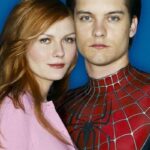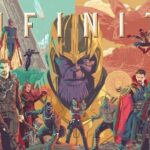The Marvel Cinematic Universe (MCU) has delivered some of the most iconic comic book events on screen—but not always as you’d expect. While the storylines are often based on major Marvel Comics arcs, the characters playing those roles are frequently switched or altered due to rights, continuity, or creative direction.
Let’s explore some major Marvel comic events that were adapted in the MCU, but with different characters taking center stage than they did in the original comics.
1. Civil War – No X-Men, No Fantastic Four
Comic Event:
In the 2006 “Civil War” storyline, the Superhuman Registration Act splits the Marvel Universe. Iron Man leads the pro-registration side, while Captain America opposes it. The event includes Spider-Man unmasking, Reed Richards (Mr. Fantastic) and Susan Storm (Invisible Woman) on Tony’s side, and mutants like Wolverine and Cyclops caught in the moral crossfire.
MCU Version (Captain America: Civil War, 2016):
The MCU had no access to X-Men or the Fantastic Four at the time. The story was rewritten to center around the Sokovia Accords, following the events of “Avengers: Age of Ultron”. The MCU used characters like Black Panther, Ant-Man, and Vision to fill in the gaps. Even Spider-Man appeared late in the game, played by Tom Holland, but his role was limited.
Character Switch Highlights:
- Reed Richards’ role (science, strategy) was absorbed by Tony Stark.
- Spider-Man’s emotional unmasking arc was reduced to a short cameo.
- No X-Men involvement, unlike in the comics where they were neutral but morally central.
2. Planet Hulk – With Thor Instead of Hulk’s Warbound
Comic Event:
“Planet Hulk” (2006) follows Hulk being exiled to the planet Sakaar, where he becomes a gladiator, starts a rebellion, and eventually becomes king. He forms the Warbound, a team of alien warriors. This leads into World War Hulk, when he returns to Earth for revenge.
MCU Version (Thor: Ragnarok, 2017):
While the visual style and setting of Sakaar come straight from the comics, the main character isn’t just Hulk—it’s a buddy movie with Thor. Hulk has been on Sakaar for a while but doesn’t follow the same emotionally rich storyline.
Character Switch Highlights:
- Hulk’s Warbound team was replaced by Thor, Valkyrie, and Loki.
- The tragic love story of Caiera, Hulk’s wife in the comics, was removed entirely.
- Hulk never leads a rebellion, and there’s no World War Hulk follow-up (yet).
3. Secret Invasion – Smaller, Safer Scale
Comic Event:
“Secret Invasion” (2008) is a dark, intense storyline where Skrulls secretly replace Earth’s heroes, including Spider-Woman, Hank Pym, and even Elektra. The paranoia spreads across the Marvel Universe.
MCU Version (Secret Invasion series, 2023):
The Disney+ show was a much smaller-scale adaptation, focused on Nick Fury, Talos, and a few government agents. There was no infiltration of the Avengers, no widespread superhero distrust, and far fewer surprises.
Character Switch Highlights:
- Spider-Woman’s central role was completely cut.
- The super-Skrull idea was minimal and limited to a few scenes.
- Heroes like Iron Man, Reed Richards, or Black Panther, major players in the comic, are entirely absent.
4. Infinity Gauntlet – Missing Silver Surfer & X-Men
Comic Event:
In “The Infinity Gauntlet” (1991), Thanos collects all six Infinity Gems and wipes out half the universe to impress Mistress Death. Cosmic heroes like Silver Surfer, Adam Warlock, and Galactus play key roles.
MCU Version (Infinity War & Endgame, 2018–2019):
While the MCU closely follows the gauntlet storyline, the cosmic characters are missing. Instead, it’s the Avengers who lead the charge, especially Iron Man, Doctor Strange, and Captain America. Gamora becomes a central emotional pivot, while Adam Warlock is introduced much later in Guardians of the Galaxy Vol. 3.
Character Switch Highlights:
- Silver Surfer’s role was replaced by Hulk, who crashes into the Sanctum instead.
- Adam Warlock, the comic’s main strategist, was entirely absent during the Infinity Saga.
- Doctor Strange and Iron Man take over planning and time-stone defense roles.
5. Age of Ultron – Comic vs Movie Disparity
Comic Event:
In the comics (2013), Ultron takes over the world and alters timelines. Heroes like Wolverine, Invisible Woman, and She-Hulk are heavily involved. It’s a dark time-travel dystopia tale.
MCU Version (Avengers: Age of Ultron, 2015):
Instead of a dystopian future, Ultron is defeated in one film. The story focuses more on Tony Stark creating Ultron, unlike the comics where Hank Pym (Ant-Man) is Ultron’s creator.
Character Switch Highlights:
- Hank Pym’s creator role was shifted to Tony Stark.
- Time-travel story arc was removed; replaced by Sokovia events.
- Characters like Wolverine and Invisible Woman were excluded due to rights issues.
6. The Ultimates – Rewriting the Avengers Origins
Comic Event:
The Ultimates (2002) was a modern reboot of the Avengers for a new generation, with grittier characters, updated tech, and political realism. It introduced Nick Fury modeled on Samuel L. Jackson, a militarized S.H.I.E.L.D., and an edgier Captain America.
MCU Version (Phase 1, 2008–2012):
The MCU heavily used The Ultimates aesthetics and tone for its Avengers setup. But it pulled characters and characterizations from other timelines too.
Character Switch Highlights:
- Nick Fury was changed from a white WWII vet to a Black modern leader (inspired by Ultimate Fury).
- Hank Pym and Wasp, founders of the Avengers in comics, were replaced by Black Widow and Hawkeye in the original team lineup.
- Quicksilver and Scarlet Witch, mutants in the comics, were rebranded as HYDRA experiments.
7. House of M – From “No More Mutants” to “No More Reality”
Comic Event:
In House of M (2005), a grief-stricken Scarlet Witch rewrites reality, giving every hero their heart’s desire. When it unravels, she whispers “No more mutants,” wiping out most of the mutant population.
MCU Version (WandaVision, 2021):
The Disney+ series WandaVision uses a similar emotional framework—Wanda creates a fake reality due to grief—but flips major characters.
Character Switch Highlights:
- No X-Men or Magneto (Wanda’s father in comics) due to rights, changing Wanda’s origin.
- Instead of affecting mutants, her actions affect Westview citizens.
- Pietro’s recast (Evan Peters) was a meta nod but not the Fox Quicksilver.
8. Armor Wars – With Rhodey, Not Stark
Comic Event:
In Armor Wars (1987), Tony Stark discovers his Iron Man tech has been stolen and used by villains. He goes on a rogue mission to destroy all stolen suits, even if it means fighting fellow heroes.
MCU Version (Upcoming: Armor Wars series/film):
Instead of Tony, the MCU’s Armor Wars is expected to star James “Rhodey” Rhodes (War Machine) following Tony’s death.
Character Switch Highlights:
- Rhodey will take the central role, instead of Stark.
- Stark’s legacy becomes the main conflict, not Stark himself.
- Possibly fewer hero conflicts, focusing more on tech theft fallout.
9. What If…? – Characters in Alternate Roles
Comic Event:
What If…? comics explore alternate realities: like “What if Jane Foster had become Thor?” or “What if Spider-Man joined the Fantastic Four?”
MCU Version (What If…?, 2021–):
The Disney+ show adopts this format but with characters from the MCU. It makes big character switches in known events.
Character Switch Highlights:
- T’Challa as Star-Lord instead of Peter Quill.
- Peggy Carter becomes Captain Carter, not Steve Rogers.
- Gamora defeats Thanos before the Infinity War even begins.
These switch-ups are canon to the MCU multiverse but very different from original What If comics.
10. Young Avengers – Mixed Origins and New Starters
Comic Event:
The Young Avengers comic series (2005) introduces a next generation of heroes: Kate Bishop (Hawkeye), Wiccan and Speed (Wanda’s sons), Patriot, Hulkling, and Iron Lad (a young Kang variant).
MCU Version (In Progress – Phases 4–6):
The MCU is slowly building this team but with some new character backstories.
Character Switch Highlights:
- Iron Lad has not yet appeared, even though Kang (his older self) has.
- Wiccan and Speed were introduced in WandaVision, but their origins differ.
- Patriot is now Isaiah Bradley’s grandson, hinting at a new backstory.
- Hulkling, a major character in the comics, is completely missing (so far).
Why the Switch?
Marvel Studios has had to adapt creatively due to:
- Character rights (X-Men, Fantastic Four, Spider-Man were owned by other studios).
- Timeline changes and MCU continuity.
- Tone and audience expectations (MCU is often lighter than the comics).
These switches, though controversial among purists, often lead to new interpretations of beloved stories and fresh dynamics between characters.
Conclusion: A Different Kind of Hero
The MCU is not a direct replica of the comics—and that’s part of its charm. While core events like Civil War, Infinity Gauntlet, and Planet Hulk are familiar to comic readers, character switches and narrative rewrites make each adaptation unique.
It shows us that even in a universe full of superheroes, the roles can change, but the stakes remain just as epic.


